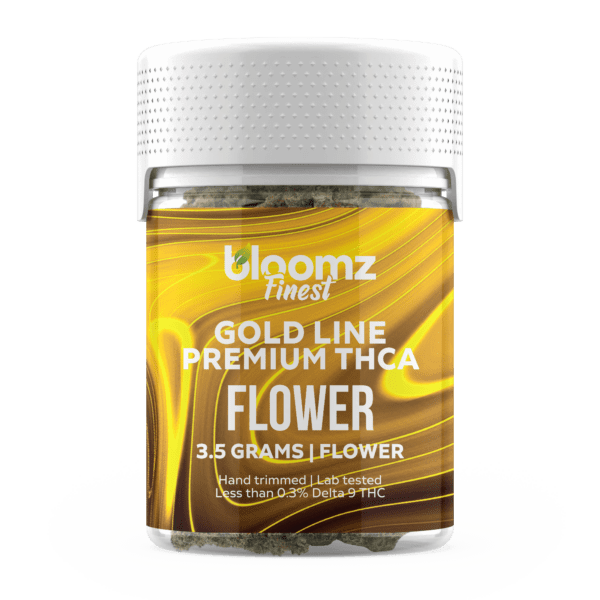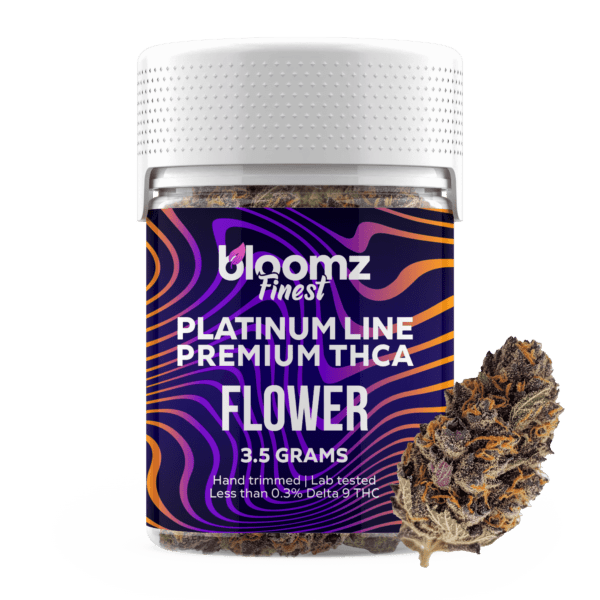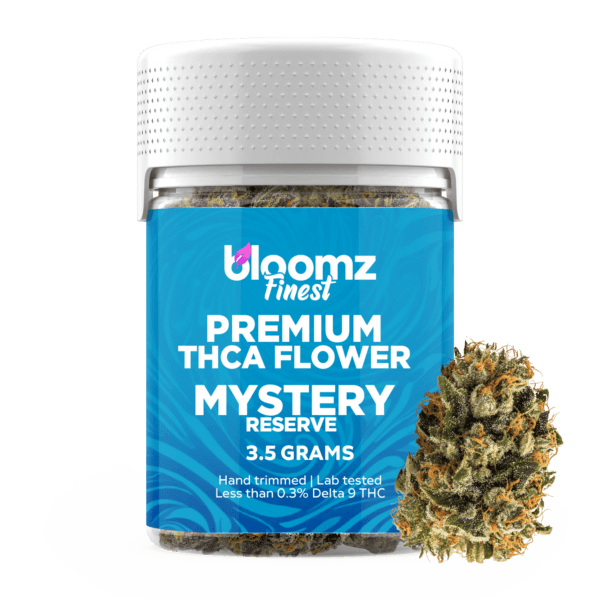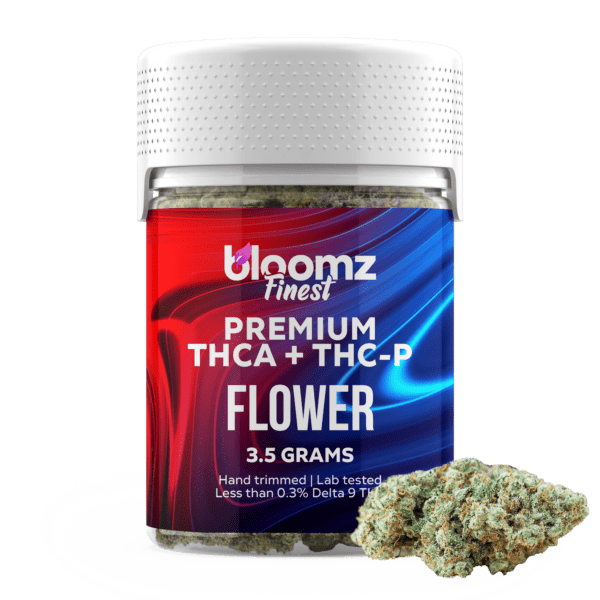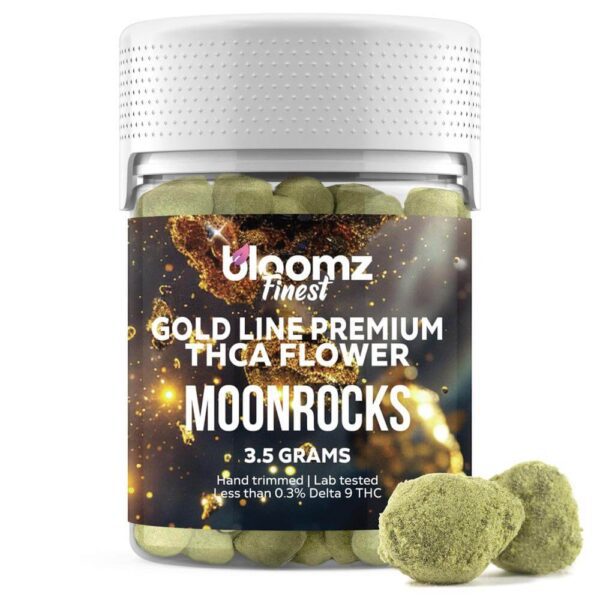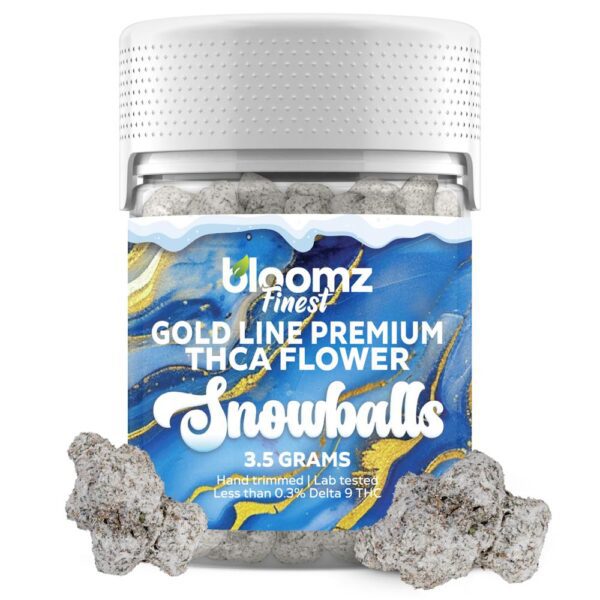Ready to explore the world of Delta 8 THC flower but unsure where to begin? You’ve landed in the right spot! Think of Delta 8 flower as a unique botanical adventure, offering a different perspective compared to its more famous cannabinoid cousins. It presents an intriguing option for those seeking a particular kind of experience.
But like any new journey, knowing the terrain is key. This guide is your compass, designed to navigate the nuances of selecting, preparing, and enjoying Delta 8 THC flower effectively and responsibly. Let’s embark on this exploration together and unlock the secrets to making the most of this fascinating hemp product.
TO BUY DELTA 8 THC FLOWER CLICK HERE
Recommended products
Delta 8 THC Flower 101
“Delta 8 THC flower” available on the market isn’t a naturally grown flower dominant in this specific cannabinoid. Instead, it’s typically high-quality hemp flower (usually rich in CBD or CBG) that has been enhanced by adding Delta 8 THC distillate. Delta 8 THC itself is an isomer of the more well-known Delta 9 THC, meaning it has a similar chemical structure but with a slight difference (the location of a double bond) that results in noticeably different, often described as milder and more clear-headed, psychoactive effects for many users.
The creation process involves applying Delta 8 THC distillate onto hemp flower buds. This distillate is typically produced by chemically converting CBD isolate (derived from legal hemp) into Delta 8 THC through a process called isomerization. The resulting thick, potent Delta 8 THC oil is then applied to the hemp flower. Common methods include lightly spraying or misting the buds with the heated distillate for an even coating, or sometimes even tumbling the buds in the distillate. The goal is to infuse the flower with a significant amount of Delta 8 THC, creating a final product that delivers Delta 8’s effects when smoked or vaped.
Since Delta 8 THC flower starts as legal hemp flower and the added Delta 8 THC is typically derived from hemp-extracted CBD, it often falls under the legal framework established by the 2018 Farm Bill in the United States. This federal legality (though state laws vary significantly and are subject to change) has contributed to its widespread availability, particularly online. The final product usually contains the original cannabinoids from the base hemp flower (like CBD, CBG, minor cannabinoids) plus the added Delta 8 THC, creating a unique entourage effect alongside the Delta 8’s primary influence.
Basically, Delta 8 THC flower offers a familiar consumption method for experiencing the unique effects of Delta 8 THC. It combines the characteristics of the base hemp flower – its appearance, aroma, and existing cannabinoid profile – with a significant dose of added Delta 8 THC distillate.
Who is Delta 8 THC Flower Actually Tailored For?
Delta 8 THC Flower appeals to a diverse range of individuals, each seeking something specific from their botanical experience. It occupies a unique space in the market, attracting those who might find traditional Delta 9 THC too intense or CBD too subtle. Understanding who typically gravitates towards Delta 8 flower can help you determine if it aligns with your preferences and desired outcomes, such as:
The Cannabinoid Curious: Individuals who are familiar with CBD or perhaps even Delta 9 THC but are intrigued by the unique properties of Delta 8 THC often find the flower format appealing. It offers a classic consumption method while providing the distinct effects associated with Delta 8
Those Seeking a Milder Experience: Compared to Delta 9 THC, Delta 8 is often described as offering a less intense, clearer-headed experience. Users looking for a way to unwind or achieve a sense of calm without feeling overwhelmed may find Delta 8 flower particularly suitable. It’s often chosen by those wanting functional relaxation.
Traditional Cannabis Enthusiasts: People who appreciate the ritual and sensory experience of handling and consuming cannabis flower – the grinding, packing, rolling, and the aroma – may prefer Delta 8 flower over other formats like edibles or vapes. It provides a familiar process with a different cannabinoid profile.
Individuals Exploring Hemp-Derived Options: Due to its legal status derived from hemp under the 2018 Farm Bill (though state laws vary), Delta 8 flower is accessible in areas where recreational cannabis might not be. This makes it an option for those limited by local regulations but still interested in exploring psychoactive cannabinoids.
Budget-Conscious Consumers: In some markets, Delta 8 THC flower can be more affordably priced compared to high-THC cannabis flower, making it an attractive option for regular users looking for a cost-effective way to enjoy cannabinoids.
Users Seeking Specific Strain Effects: Just like traditional cannabis, Delta 8 flower comes in various strains, each with its own terpene profile that can influence the overall experience (e.g., uplifting Sativa-dominant effects or relaxing Indica-dominant effects). Consumers interested in tailoring their experience through strain selection find Delta 8 flower appealing.
5 Key Things to Look for in Delta 8 THC Flower
Navigating the burgeoning market for Delta 8 THC flower requires a discerning eye. Not all products are created equally, and thus, ensuring you select high-quality, safe flower is paramount to a positive experience. Focusing then on these key indicators can help you differentiate premium offerings from subpar ones:
Lab Testing: This is arguably the most critical factor. Reputable brands will always provide third-party lab reports, often called Certificates of Analysis (COAs), for their Delta 8 flower. These reports verify the cannabinoid profile, confirming the Delta 8 THC potency and ensuring the Delta 9 THC levels are below the legal limit of 0.3% by dry weight. Crucially, comprehensive COAs also test for harmful contaminants like pesticides, heavy metals, residual solvents (from the Delta 8 conversion process), and microbial contaminants (mold, mildew). Always look for recent, batch-specific COAs accessible via QR code or directly on the vendor’s website. Avoid any product that doesn’t offer transparent, verifiable lab testing.
Source and Cultivation: High-quality Delta 8 flower starts with high-quality hemp flower. Inquire about where and how the base hemp flower was grown. Ideally, it should be sourced from reputable farms in the USA that utilize organic or sustainable cultivation practices, minimizing the risk of pesticide contamination from the start. The method used to apply the Delta 8 THC distillate to the hemp flower also matters. Some methods (like spraying) can lead to uneven distribution, while infusion techniques might offer better consistency. Understanding the provenance and production process speaks volumes about the final product’s quality.
Terpene and Strain Profiles: Delta 8 THC itself provides the core psychoactive effect, but the terpenes present in the flower significantly shape the overall experience, influencing the aroma, flavor, and nuances of the effects (often referred to as the entourage effect). Look for vendors who provide detailed information about the strain (e.g., Indica, Sativa, Hybrid) and its specific terpene profile. Common terpenes like Myrcene (potentially relaxing), Limonene (potentially uplifting), and Pinene (potentially focusing) contribute distinct characteristics. Knowing the terpene profile helps you select a strain that aligns with your desired outcome, whether it’s unwinding in the evening or seeking a gentle daytime boost.
Visual Inspection: You can tell a lot about Delta 8 flower by looking closely at it. If buying in person, examine the buds for a healthy appearance. High-quality flower should have well-formed, dense buds, often with visible crystalline structures called trichomes (though these might be less prominent after the Delta 8 application process). The color should generally be vibrant green, though hues can vary depending on the strain and curing process. Avoid flower that looks overly brown, yellow, excessively dry, brittle, or shows any signs of mold or mildew (white fuzzy patches or dark spots). When buying online, scrutinize the product photos and look for high-resolution images from multiple angles. Reputable vendors showcase their products clearly. Pay attention to how the Delta 8 distillate appears on the flower – it should look evenly coated, not like a thick, syrupy layer clumsily applied.
Aroma Check: The nose knows! Terpenes are responsible for the flower’s scent, and a rich, pungent aroma is often indicative of a well-preserved terpene profile and overall quality. When you open the container (if possible before purchase, or immediately upon receiving an online order), the flower should have a distinct and pleasant smell, characteristic of its strain profile – perhaps piney, citrusy, earthy, floral, or skunky. A weak aroma might suggest old flower or poor storage, meaning the terpenes have degraded. Conversely, avoid flower that smells musty, grassy (like hay), damp, or has a chemical-like odor, as these can indicate poor curing, mold, or issues with the Delta 8 application process. A strong, appealing scent often correlates with a flavorful and effective product.
What are the Methods for Taking Delta 8 Flower?
Once you’ve selected your high-quality Delta 8 THC flower, the next consideration is the consumption method. Unlike processed Delta 8 products, the flower format offers versatility, allowing for several distinct approaches, each influencing how quickly you feel effects, how long they last, and the overall nature of the experience. Let’s explore the fundamental nature of each common method, shall we.
Method #1: Smoking
Smoking represents the most traditional approach, utilizing combustion to instantly heat the Delta 8 flower and release cannabinoids and terpenes in smoke, which is then inhaled. This method involves burning the plant material directly using implements such as pipes (hand pipes or water pipes/bongs) or by rolling the flower into joints (using rolling papers) or blunts (using cigar wraps). The defining characteristic of smoking is its rapid delivery system; cannabinoids are absorbed quickly into the bloodstream via the lungs, resulting in effects that are typically noticeable within just a few minutes.
This immediacy makes smoking a popular choice for those seeking near-instantaneous relaxation or euphoria. The ritual of preparation and the full-bodied flavor profile derived from combustion are also appealing aspects for many users. However, the process inherently involves inhaling smoke and its associated byproducts, which can be harsh for some individuals. Furthermore, the distinct aroma produced by smoking is quite noticeable and tends to linger, which may be a practical consideration depending on your circumstances.
Method #2: Vaping
Vaping Delta 8 THC employs a different heating principle: vaporization instead of combustion. A specialized device known as a dry herb vaporizer heats the flower to a precise temperature range (typically below the point of burning) sufficient to turn the cannabinoids and terpenes into an inhalable vapor. This method avoids burning the plant material, offering a key distinction from smoking. The vapor is generally considered smoother and less harsh on the lungs than smoke.
The onset of effects from vaping is relatively fast, usually occurring within 5 to 15 minutes, slightly slower than smoking but still quicker than oral consumption. Many users report that vaping allows for a clearer expression of the flower’s specific terpene profile, leading to a “cleaner” taste experience. While requiring an initial investment in a vaporizer (portable or desktop), this method is often favored for its efficiency, perceived health advantages over smoking, enhanced flavor, and potentially more discreet aroma that dissipates faster.
Method #3: Cooking/Baking
This method transforms Delta 8 THC flower into homemade edibles by infusing its active compounds into fats like butter or oil, which are then used in recipes. Cooking or baking offers a fundamentally different experience because the cannabinoids are ingested rather than inhaled. When Delta 8 THC is processed through the digestive system and metabolized by the liver, it results in effects that are significantly delayed, typically taking 45 minutes to over 2 hours to become apparent.
Once the effects do begin, they are often perceived as more intense and significantly longer-lasting (potentially 4-8 hours or more) compared to inhalation methods. This route completely avoids inhalation, making it suitable for those who prefer not to smoke or vape. The process requires preparatory steps including decarboxylation (heating the flower to activate THC) and infusion. Creating edibles allows for diverse culinary applications but requires careful attention to dosing due to the delayed onset and potential for amplified potency.
Method #4: Extraction for Concentrates
Extraction involves processing Delta 8 flower to isolate and concentrate its cannabinoids and terpenes, creating potent products like oils or rosin. This is a more advanced technique typically requiring specific equipment and knowledge. Methods can involve using solvents (like ethanol) to dissolve the desired compounds, followed by careful evaporation of the solvent, or solventless techniques like applying heat and pressure with a rosin press to mechanically squeeze out the resin.
The resulting concentrates are significantly more potent than the original flower, meaning only very small amounts are needed to achieve strong effects. These concentrates are typically consumed via dabbing (vaporizing on a hot surface) or using specialized vape pens designed for extracts. Extraction allows for highly potent products but demands precision, safety precautions (especially with solvents), and a good understanding of the processes involved. It’s generally suited for experienced users seeking maximum potency or specific concentrate consistencies.
How to Take Delta 8 THC Flower Properly and Effectively Based Upon the Selected Method
Understanding the different ways to consume Delta 8 flower is the first step; the next is mastering the techniques required to do so properly and effectively. Optimizing your chosen method below ensures you get the most out of your flower in terms of efficiency, flavor, and the overall quality of the experience:.
Smoking: Use a grinder to break down buds into evenly sized, smaller pieces. This promotes a smoother, more consistent burn whether in a bowl or rolled. When using a pipe or bong, pack the ground flower so it’s firm enough not to fall through but loose enough for air to pass easily. Avoid packing too tightly. Instead of torching the entire bowl surface at once, gently light just a corner or edge (‘cornering’). This conserves your flower and preserves terpenes for better flavor throughout the session. Now, if rolling joints or blunts, aim for a uniform cylinder – not too tight (poor airflow) or too loose (burns unevenly). Always use a filter tip or crutch for structure and to prevent debris inhalation. Take slow, steady draws rather than sharp, aggressive puffs, allowing the Delta 8 Flower to combust evenly and reducing harshness.
Vaping: Most dry herb vaporizers perform best with a medium to medium-fine grind but consult your device’s manual. Consistent particle size is key for even heating. Fill the oven or chamber without packing it down too tightly. Leaving slight room allows hot air to circulate efficiently through the delta 8 flower material for optimal vaporization. Start with lower temperatures (e.g., 350°F-370°F / 175°C-188°C) to savor terpene flavors, gradually increasing (up to 400°F+ / 205°C+) for denser vapor and stronger effects if desired. Experiment to find your preference. Take slow, long, deliberate draws (often 5-10 seconds) to give the vaporizer time to generate vapor effectively. Fast, short puffs are less efficient. Now, depending on your vaporizer model, stirring the contents of the chamber midway through your session can help expose more surface area and ensure all the material is evenly vaporized.
Cooking/Baking: Mastering decarboxylation is non-negotiable. Gently heat your ground flower (e.g., spread on a baking sheet at ~240°F / 115°C for 30-45 minutes) before infusion to activate the Delta 8 THC. Skipping this means inactive cannabinoids and ineffective edibles. Gently simmer the decarboxylated flower in your chosen fat (butter, coconut oil, etc.) over low, consistent heat (use a double boiler or careful monitoring; do not boil) for 2-3 hours to allow cannabinoids to infuse. Carefully strain the infused oil/butter through cheesecloth or a fine-mesh sieve to remove all plant material. Avoid squeezing too hard, which can add unwanted chlorophyll taste. Estimate the total milligrams of Delta 8 THC in your starting flower (based on lab reports) and divide by the amount of fat used and the number of servings your recipe yields. Always clearly label homemade edibles with their estimated potency. Keep in mind, when consuming homemade edibles, begin with a very small portion (e.g., 5mg or less of Delta 8 THC), wait at least 1.5-2 hours to fully gauge effects, and only then consider taking more.
Extraction: If using solvents (e.g., ethanol), work in a well-ventilated area away from sparks or flames. Research and employ safe purging techniques meticulously to remove residual solvents. Whether using solvent-based methods (soaking time, filtration) or solventless rosin pressing (specific temperature, pressure, filter bag micron size), adhere strictly to established best practices for that technique. Also, recognize that the resulting concentrate will be significantly more potent than the Delta 8 flower. Handle and dose accordingly. Plus, when consuming homemade concentrates (dabbing, vaping), begin with a minuscule amount (the size of a pinhead or smaller) to assess potency before attempting larger doses.
Can You Take Delta 8 THC Flower if You’re Also Using Other Cannabinoid-Infused Products?
Exploring the effects of Delta 8 THC flower while incorporating other cannabinoid products into your routine is a common point of curiosity. It’s certainly feasible, but venturing into combinations requires informed awareness and a cautious approach. The way different product types deliver cannabinoids into your system varies significantly, impacting onset time, duration, and the overall character of the experience. For example, inhaling Delta 8 flower offers rapid effects due to lung absorption, whereas consuming an edible, like a gummy or baked good containing Delta 9 THC or even more Delta 8, involves digestion and liver metabolism, leading to a delayed but potentially more prolonged and intense experience kicking in later. Using a sublingual tincture (CBD or Delta 10 THC, perhaps) concurrently would introduce yet another absorption rate and duration profile. Understanding these pharmacokinetic differences between formats—be it vapes, beverages, capsules, or potent wax dabs—is the first step in anticipating how combining them with Delta 8 flower might unfold.
Beyond the delivery method, the specific cannabinoid profiles of the products you’re combining are paramount. Layering Delta 8 flower with non-intoxicating cannabinoids such as CBD, CBG, or CBN (found in various tinctures, capsules, or even specialized flower) might modulate the Delta 8’s effects, potentially smoothing out the experience or adding a different dimension of relaxation without significantly increasing the buzz, leveraging the concept of the entourage effect. Combining Delta 8 flower with cannabinoids known for mild potency, like Delta 10 THC or THCV (perhaps from a vape cartridge), could create a subtly different, possibly more energetic or nuanced psychoactive feel. However, exercising significant caution is vital when mixing Delta 8 flower with moderate or high-potency cannabinoids. This includes Delta 9 THC, THCA (which becomes Delta 9 upon heating), Delta 11 THC, HHC, HHC-P, THC-B, THC-H, THC-JD, or the particularly potent THC-P, often found in strong edibles, vapes, or concentrates like wax dabs. These combinations can lead to additive or synergistic effects, meaning the resulting psychoactivity could be much stronger than anticipated from consuming either product alone.
Therefore, if you choose to combine Delta 8 THC flower with other cannabinoid products, keep these crucial points in mind:
Know Your Products: Always be acutely aware of the specific cannabinoids and their potencies in all products you intend to combine. Check Certificates of Analysis (COAs) or lab reports whenever possible.
Start Low, Go Slow: This is the most important guideline. Begin with minimal amounts of each product.
Reduce Individual Doses: Use significantly smaller amounts of the Delta 8 flower and the other cannabinoid product than you would consume if using them separately, particularly when psychoactive cannabinoids are involved.
Allow Ample Response Time: Be patient and give your body sufficient time to process the effects, especially when using edibles or other products with delayed onset, to prevent accidental overconsumption.
Monitor Effects Closely: Pay careful attention to how the specific combination makes you feel.
Understand Variability: Recognize that interactions between cannabinoids can be complex and your individual response may differ from others or even from previous experiences.
Prioritize Comfort & Control: Aim for a comfortable and manageable experience; avoid pushing your limits when experimenting with combinations.
Recommended products
A Quick Word on Storing Delta 8 THC Flower Before and After Use
Proper storage is essential for maintaining the quality, potency, and freshness of your Delta 8 THC flower, both before you initially use it and between sessions. Cannabinoids like Delta 8 THC and especially the aromatic terpenes responsible for flavor and nuanced effects are sensitive compounds. Exposure to air, light, heat, and moisture can degrade them over time, leading to a less potent and less flavorful product. Whether your flower came in a high-quality container or simple packaging, transferring it to an appropriate long-term storage solution is a wise investment in preserving its desirable characteristics. Here’s how you can go about doing so effectively:
Utilize Airtight Glass Containers: Opt for jars made of glass, as this material is non-porous, meaning it won’t leach chemicals or negatively affect your flower’s taste—an advantage over some plastic containers. Ensure the jar seals completely airtight (specialized stash jars or standard Mason jars with good seals work well) to crucially prevent oxygen exposure, which causes oxidation and degrades cannabinoids and terpenes over time.
Create the Right Storage Climate: Store the sealed jars in a location that remains consistently cool, dark, and dry. Avoid spots with excessive heat, including proximity to electronics or radiators, as heat significantly accelerates cannabinoid and terpene degradation. Equally important is protection from light, particularly direct sunlight and UV rays which rapidly break down cannabinoids; cupboards, drawers, or closets are ideal. A dry environment is essential to inhibit the growth of mold and mildew.
Consider Humidity Regulation for Optimal Freshness: To preserve the Delta 8 THC flower’s texture and potency, think about using two-way humidity control packs (common brands include Boveda or Integra Boost) inside your storage jars. These are designed specifically to maintain an ideal relative humidity level (typically 58% or 62% RH), effectively preventing the flower from becoming too dry and brittle (leading to terpene loss) or overly damp (which increases the risk of mold).
Evaluate Original Packaging Wisely: If your Delta 8 flower initially comes in high-quality packaging, such as a resealable, light-blocking mylar bag or a well-sealed jar, it might suffice for adequate short-term storage. However, for preserving the flower’s quality over longer periods, transferring it to an appropriate airtight glass jar setup is generally the preferred method.
Steer Clear of Refrigerator and Freezer Storage: It’s best to avoid storing your Delta 8 flower in the refrigerator, as the frequent opening and closing can cause temperature and humidity fluctuations that may introduce unwanted moisture. Freezing is also not recommended because the extremely low temperatures can make the delicate trichomes (where cannabinoids reside) brittle and prone to breaking off, thereby reducing overall quality and potency.
Maintain Good Storage Habits After Each Use: Whenever you take flower out for use, make it a habit to promptly return any unused portion to its airtight container. Ensuring it’s resealed correctly and placed back into its controlled cool, dark, dry environment immediately helps maintain its freshness and quality for your next session.
Pros & Cons of Taking Delta 8 THC Flower
Choosing Delta 8 THC Flower comes with its own set of advantages and potential drawbacks compared to other cannabis and hemp products. Understanding these can help you make an informed decision about whether it aligns with your preferences and lifestyle. It offers a unique balance for many, but it’s not without its considerations.
Pros
These are the key advantages when taking it:
Milder Psychoactive Experience: Often described as less intense and anxiety-provoking than Delta 9 THC, making it preferable for users sensitive to THC or those seeking functional relaxation.
Rapid Onset (Inhalation): Smoking or vaping flower provides effects within minutes, allowing for quick adjustments and immediate enjoyment.
Familiar Consumption Ritual: Offers the traditional experience of handling, preparing, and consuming flower, which many users appreciate.
Entourage Effect Potential: Whole flower contains a spectrum of cannabinoids and terpenes that work synergistically, potentially enhancing or modulating the overall effects beyond Delta 8 alone.
Strain Variety: Available in numerous strains (Indica, Sativa, Hybrid) with distinct terpene profiles, allowing users to tailor their experience (e.g., choosing an uplifting or relaxing strain).
Versatility in Use: Can be smoked, vaped, or used to make homemade edibles or extracts, offering flexibility in consumption methods.
Legal Accessibility (Federally): Derived from hemp, Delta 8 THC flower is federally legal under the 2018 Farm Bill (though state laws vary significantly and are subject to change), making it accessible in more locations than traditional cannabis.
Flavor and Aroma: High-quality, well-preserved flower offers a rich sensory experience through its diverse aromas and flavors derived from terpenes.
Cons
These are the typical drawbacks you might encounter:
Potential for Tolerance Build-Up: Engaging with Delta 8 THC flower consistently over time may lead your body to build a tolerance. This biological adjustment means you might eventually need to consume more flower than initially required to achieve the same desired sensations, potentially necessitating planned breaks from use (often called tolerance breaks) to restore your original sensitivity.
Legality Varies by State: Despite federal legality, many states have specifically banned or restricted the sale and possession of Delta 8 THC products, creating a confusing legal landscape.
Potential Drug Test Complications: A significant practical consideration is that standard drug screening tests typically identify THC metabolites but do not distinguish between Delta 8 THC and the more commonly restricted Delta 9 THC. This means that using Delta 8 THC flower could result in a positive THC drug test.
Now You Have a Better Idea on How to Take Delta 8 THC Flower!
Armed with insight, the path forward with Delta 8 flower unfolds into a landscape ripe for personal discovery, moving beyond mere procedure into the art of tailoring your own unique experience. This intriguing botanical serves as a passport to exploring nuanced states of being, inviting a mindful approach to finding what truly resonates with your individual preferences and desired atmosphere. Let this knowledge empower you to engage confidently and creatively, respecting the plant’s potential while navigating your journey with informed curiosity. The ever-expanding universe of cannabinoids holds countless possibilities, and your thoughtful participation is part of that exciting evolution—embrace the exploration with awareness and intention.



